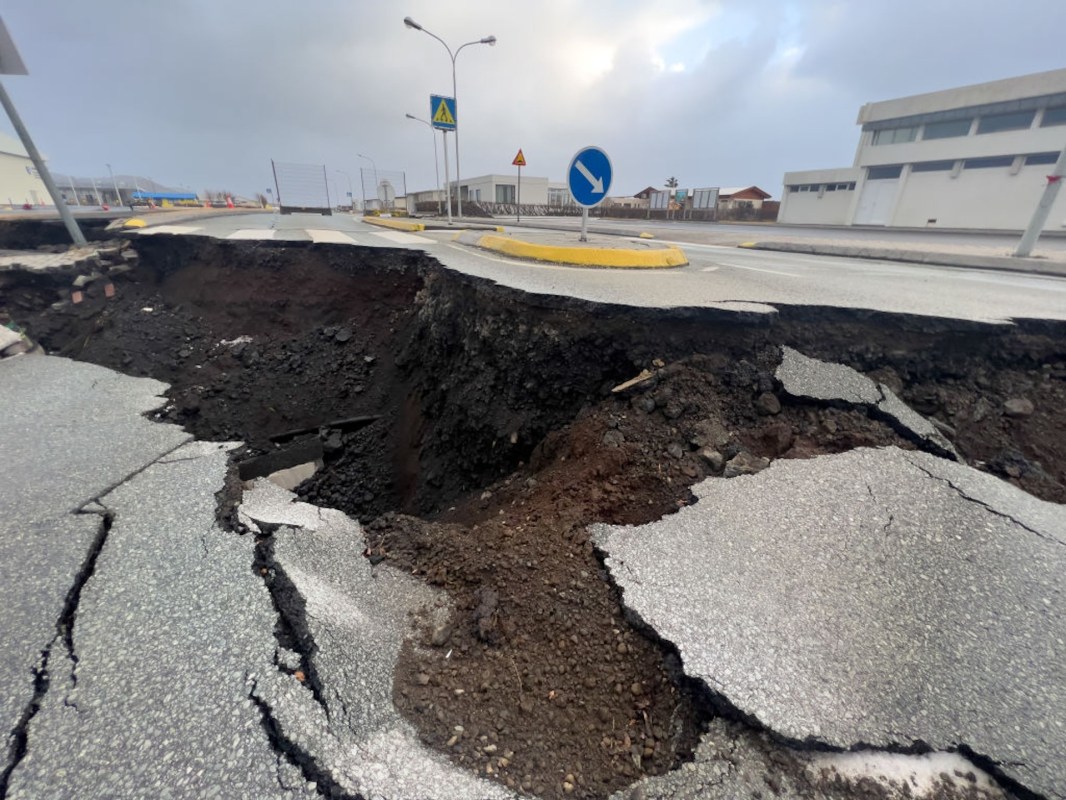Officials have reportedly lowered the threat level following aerial footage that revealed a massive crack in the ground of Grindavik, Iceland, evacuating the town's residents and temporarily shutting down the popular Blue Lagoon on Nov. 23 in anticipation of a volcanic eruption.
While Iceland is used to grappling with frequent volcanic activity, the latest development of a lowered threat level still leaves questions of whether the effects of an eruption could be felt beyond the country's borders.
What's happening?
Iceland declared a state of emergency on Nov. 13 following a series of earthquakes that sparked the evacuation of thousands of residents of Grindavik two days prior, as reported by Denise Chow of NBC News.
Steam can be seen rising through the crack in the shocking footage, and as detailed by NBC News, the Civil Protection Agency reportedly became concerned that a magma tunnel could ultimately send scorching-hot lava into the town.
The Icelandic Meteorological Office recorded more than 1,000 earthquakes on the Reykjanes Peninsula over a 24-hour period prior to the evacuation.
While the threat level has been lowered, the Blue Lagoon remains closed until at least Nov. 30, when it will reassess, and residents who were evacuated are still not cleared to move back home.
Why is this important?
Volcanic eruptions release heat-trapping gases like carbon dioxide (CO2), which have been linked to health concerns such as asthma and severe weather events, as well as cooling gases like sulfur dioxide (SO2).
Because of the disruptive and deadly nature of significant volcanic events, such as the famine-creating Mount Tambora eruption in 1815, it makes sense for scientists and volcano-watchers to be on alert.
Surprisingly, though, the CO2 released by volcanic eruptions pales in comparison to the amount of harmful pollution generated by humans.
According to the United States Geological Survey, it generally takes humans "only 2.5 hours" to match the amount of CO2 that Mount St. Helens emitted over nine hours in 1980. Meanwhile, data from NASA shows that humans create 100 times more carbon dioxide than all volcanoes put together.
When a volcano in Iceland erupted in 2010, carbon emissions actually decreased because an ash cloud grounded a large number of flights, as reported by the Guardian.
The USGS noted that "the most significant climate impacts" of eruptions occur when SO2 gets converted to sulfuric acid. Over the past 50 years, more than one such event has created a slight decrease in the Earth's temperature, with the effects lasting at least a year.
What can I do to reduce my CO2 output?
Cars are major contributors to the problem of carbon pollution, with the average vehicle producing more than 10,000 pounds annually.
Transitioning to an electric vehicle, though, would eliminate tailpipe pollution from your daily commute while saving you money on maintenance and gas over the long haul.
Another way to make a positive impact and protect your bank account is to unplug energy vampires, including computers and chargers, when they aren't in use.
Join our free newsletter for cool news and cool tips that make it easy to help yourself while helping the planet.









